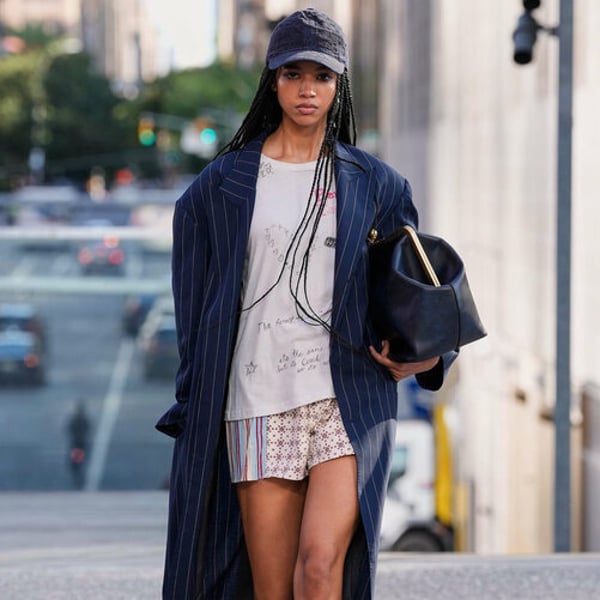By
Bloomberg
Published
September 27, 2024
We’ve had Taylor Swift, Emily in Paris and more designer purses than Saks Fifth Avenue’s handbag floor.
But there has been one $400 billion elephant in cashmere in the Manhattan courtroom of US District Judge Jennifer Rochon, who is deciding whether Tapestry Inc.’s $8.5 billion purchase of Capri Holdings Ltd. can go ahead: the increasing power of a handful of giant European luxury brands.
The US Federal Trade Commission is seeking to block Tapestry’s acquisition of Capri on the grounds that their Coach, Kate Spade and Michael Kors brands would dominate a part of the market — not cheap but not super-luxe — where working and middle-class American women shop. This would cut competition, enabling the combined company to raise prices to the detriment of these consumers.
Crucial to the outcome will be whether a so-called accessible luxury market exists and what it comprises. Closing arguments will be heard on Monday.
But any narrow definition of how we buy bags misses the broader point. The luxury sector is in winner-takes-all mode. Some players such as LVMH Moet Hennessy Louis Vuitton SE, with a market capitalization of about $390 billion, have the scale and financial firepower to keep its brands, including Louis Vuitton and Dior, but also the cheaper Marc Jacobs, at the forefront of consumers’ minds. Without smaller participants being able to thrive, shoppers could actually face less competition for their bag business.
It might seem a stretch to think that a Coach bag costing about $500 would compete with a Chanel one costing $5,000. But the reality is much more nuanced.
If accessible luxury is roughly between $100 and $1,000 — one possible way of thinking about it floated by the FTC — and women shop above and below these broad thresholds, then luxury brands’ cheapest lines are much more of a threat.
What’s more, many top-end companies have raised prices considerably over the past three years. This has put them out of reach for many shoppers and led to a slowdown in revenue growth. To regain these customers and stimulate sales, luxury behemoths are stepping up the production of entry-level items. Expect this to accelerate further.
Then there is the resale market. The runway shows and social media influencers signed up by the European brands, including Kering SA’s Gucci and Yves Saint Laurent, and Cie Financiere Richemont SA’s Chloe and Azzedine Alaia, increase the desirability of their offerings. All have considerable financial firepower to invest in them. LVMH generated sales of more than $90 billion last year, while Kering and Richemont each had revenue of over $20 billion. Combined, Tapestry and Capri would have sales of about $12 billion.
Women who may be unable to buy a new Louis Vuitton Neverfull bag could shop for a pre-owned one instead, potentially at the expense of a new Coach. As long as five years ago, UBS Group AG analysts downgraded Tapestry because it faced increased competition from used Gucci or Prada purses.

Of course the FTC is right to be concerned about consumers being disadvantaged, and this inevitably involves asking whether accessible luxury is specific market. But Tapestry and Capri have made a compelling case that its boundaries are sufficiently fuzzy to cast doubt on the FTC’s claim of dominance and therefore that shoppers will get a raw deal.
Both companies have argued that consumers face ample choice, from a $2.99 Trader Joe’s tote that went viral to those luxury items and Lululemon Athletica Inc.’s belt bag, which Tapestry Chief Executive Officer Joanne Crevoiserat memorably told the court “pained” her because her daughter carried one.
New entrants regularly crop up. Michael Kors, founder of the eponymous label, told the court that he first learned about one brand, Aupen, when he saw a photo of Taylor Swift carrying one. Consequently, they argued, it would be very difficult for the combined company to raise the price of a Michael Kors bag without improving its style or quality: If it did, shoppers would simply go elsewhere.
Jennifer Rie, an analyst at Bloomberg Intelligence, gives the companies a 60% chance of winning in court. Investors seem to agree. Shares in Tapestry are up more than 16% since the trial began Sept. 9. Capri has gained about 12%.
But the case has also highlighted just how weak Capri’s Michael Kors label is. The designer told the court that it was suffering from “brand fatigue.” Capri Chairman and CEO John Idol said it was being “squeezed from the top and from the bottom,” Women’s Wear Daily reported.
The luxury market has slowed since the transaction was announced in August 2023. Capri’s sales fell 13.2% in its most recent quarter, with a net loss of $14 million, compared with a profit $48 million in the year earlier.
Capri’s shares are trading at about $18 below the $57 offer price. If the companies win the case, Capri shares would rerate. Nevertheless, Tapestry should consider renegotiating the price. Analysts at Cowen & Co. estimate that Capri stock could fall to a level in the high teens to low $20s if Tapestry walks away.
The bidder may be reluctant to renegotiate given that it could bring more legal uncertainty after the lengthy antitrust challenge. It has consistently been in favor of the deal, while the transaction must close by February. Still, exploring any potential wiggle room is worth it.
Tapestry is acquiring Capri in an attempt to be the US equivalent of LVMH. It should take a leaf out of CEO and founder Bernard Arnault’s book, when he was buying Tiffany & Co. four years ago and seek the best value for its shareholders.More From Bloomberg Opinion.
Andrea Felsted is a Bloomberg Opinion columnist covering consumer goods and the retail industry. Previously, she was a reporter for the Financial Times.







